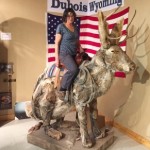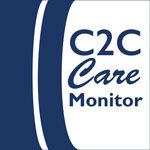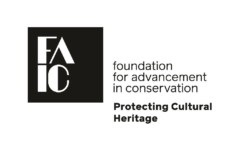Major pigeon dropping cleanup
- This topic has 7 replies, 3 voices, and was last updated 5 years, 11 months ago by
 Carolyn Schimandle.
Carolyn Schimandle.
-
AuthorPosts
-
-
May 23, 2018 at 8:16 pm #139775
 Carolyn SchimandleParticipant
Carolyn SchimandleParticipantHas anyone out there dealt with major pigeon dropping cleanup and disinfection on and around large historical objects? Has anyone hired a museum IPM consultant?
Two of the old barns at our site have recently been closed off from any access because they have major pigeon dropping contamination, and have been declared too much of a health hazard to enter. This is a fairly new park, and there are still items in the barns that will eventually be pulled out and processed as part of our museum collections, including large and important items such as a wagon used to come west in the 1850s. But that won’t happen until everything is cleaned up and disinfected. Our agency IPM expert is proposing a cleanup and disinfection procedure. He is not an expert in museum IPM, just IPM in general. I don’t want to delay the cleanup too much or add a lot of additional cost, but I’d like to double check the materials he proposes to use with someone familiar with this problem in a historical collection setting. Best I can find in online sources are exclusion techniques and small-scale cleanup of non-historical objects.
-
May 24, 2018 at 7:19 am #139776
Jeannie Whited
ParticipantI don’t know that this helps with the large clean-up, but since it sounds like you’ll have an enduring need to deal with droppings…. We’ve had a great deal of success with a product called (I kid you not) Poop-off. It’s an enzymatic cleaner specifically designed for bird droppings, and sold for use in homes. I’ve found it safe on most paints, leather, wood, etc. Of course, you always want to to a small test spot! It comes in wipes, spray bottles, or (best of all for our needs) a gallon jug. Available on Amazon, or probably local bird breeders and maybe larger pet shops that sell bird supplies.
We’ve also had netting added into our hangar ceiling to prevent birds from nesting in the ductwork and beams. That’s helped, though of course it doesn’t keep them out in the first place 🙁
-
May 24, 2018 at 10:51 am #139777
 EKTOParticipant
EKTOParticipantHi Carolyn,
Your inclination to hire professionals to handle a large-scale cleanup is a good one due to the toxicity of the feces. I would recommend hiring a conservator for a consult with regards to the materials making up the areas to be cleaned. If the areas consist of painted wood, for example, alkaline cleaning agents can be problematic. Also, some detergents can remain on surfaces and cause further deterioration. Can you include some more details on the nature of the areas to be cleaned?
Do you need a referral for a conservator, possibly in your area?
Thanks,
Emy-
May 24, 2018 at 12:08 pm #139778
 Carolyn SchimandleParticipant
Carolyn SchimandleParticipantI would love a referral to someone who knows IPM for museum collections. Or perhaps I should contact a wood and/or metal conservator. The main items of concern are an 1850s wagon that the family used to come to California from Missouri, and some other wheeled vehicles. There was a significant truck in one of the barns. I believe it was pulled out before the barn was closed, but I am not positive.
I did look on the AIC “Find a Conservator” page, but materials were listed only–not museum IPM. The disinfectants and power washing are my biggest concerns.
-
May 25, 2018 at 11:32 am #139779
 EKTOParticipant
EKTOParticipantHi Carolyn,
Please check out the Museum Pests website at http://www.museumpests.netYou can contact them at chair@museumpests.net for a consult.
Good luck,
Emy -
May 25, 2018 at 1:30 pm #139780
 Carolyn SchimandleParticipant
Carolyn SchimandleParticipantOne of the first things I did was check out the museum pest website. I love their information and have used it before for other issues. Their pigeon information is good, but what I really need is information on what harm the disinfectants may do to materials, and if there are alternatives that are just effective in destroying disease organisms but less harmful to the wood and metal objects stored in the barn. I’ll try contacting them, though; maybe they will have some information that is not online or be able to connect me to someone who does. And I am going to email wood and metal conservators today from Find a Conservator, see if they can help with this issue, and how expensive their time would be.
-
May 25, 2018 at 1:36 pm #139781
 EKTOParticipant
EKTOParticipantI have been talking to the conservator-chair of the Museum Pests website about your project–she is expecting to hear from you.
I am glad you are seeking professional consultation, as your project sounds like it has quite a few variables.
Best of luck,
Emy
-
-
May 25, 2018 at 1:50 pm #139782
 Carolyn SchimandleParticipant
Carolyn SchimandleParticipantThank you, Emy. I will contact her right away!
-
-
AuthorPosts
- The forum ‘Connecting to Collections Care Forum Archives – 2015 through 2018’ is closed to new topics and replies.




